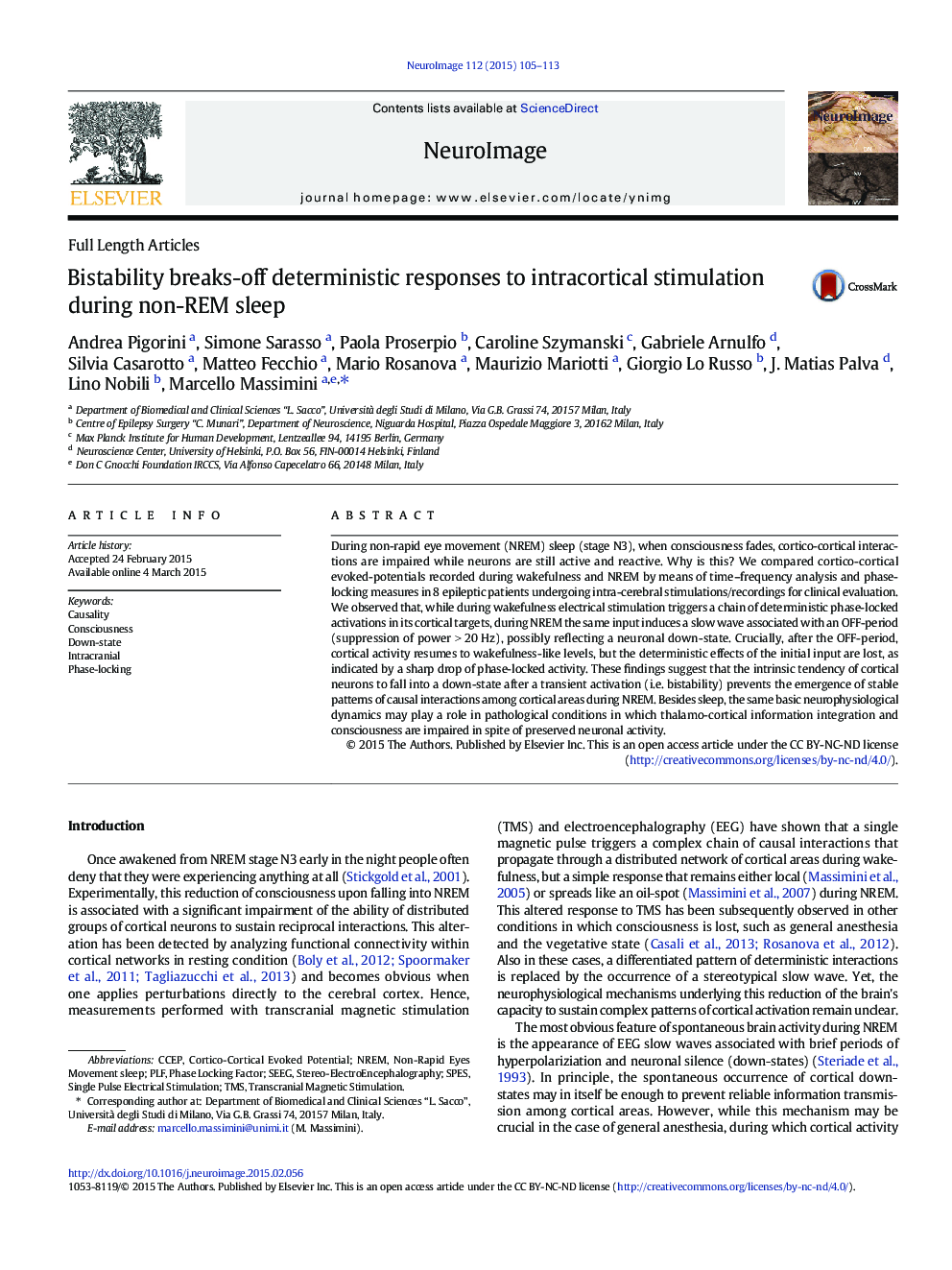| Article ID | Journal | Published Year | Pages | File Type |
|---|---|---|---|---|
| 6024940 | NeuroImage | 2015 | 9 Pages |
Abstract
During non-rapid eye movement (NREM) sleep (stage N3), when consciousness fades, cortico-cortical interactions are impaired while neurons are still active and reactive. Why is this? We compared cortico-cortical evoked-potentials recorded during wakefulness and NREM by means of time-frequency analysis and phase-locking measures in 8 epileptic patients undergoing intra-cerebral stimulations/recordings for clinical evaluation. We observed that, while during wakefulness electrical stimulation triggers a chain of deterministic phase-locked activations in its cortical targets, during NREM the same input induces a slow wave associated with an OFF-period (suppression of power > 20 Hz), possibly reflecting a neuronal down-state. Crucially, after the OFF-period, cortical activity resumes to wakefulness-like levels, but the deterministic effects of the initial input are lost, as indicated by a sharp drop of phase-locked activity. These findings suggest that the intrinsic tendency of cortical neurons to fall into a down-state after a transient activation (i.e. bistability) prevents the emergence of stable patterns of causal interactions among cortical areas during NREM. Besides sleep, the same basic neurophysiological dynamics may play a role in pathological conditions in which thalamo-cortical information integration and consciousness are impaired in spite of preserved neuronal activity.
Keywords
Related Topics
Life Sciences
Neuroscience
Cognitive Neuroscience
Authors
Andrea Pigorini, Simone Sarasso, Paola Proserpio, Caroline Szymanski, Gabriele Arnulfo, Silvia Casarotto, Matteo Fecchio, Mario Rosanova, Maurizio Mariotti, Giorgio Lo Russo, J. Matias Palva, Lino Nobili, Marcello Massimini,
